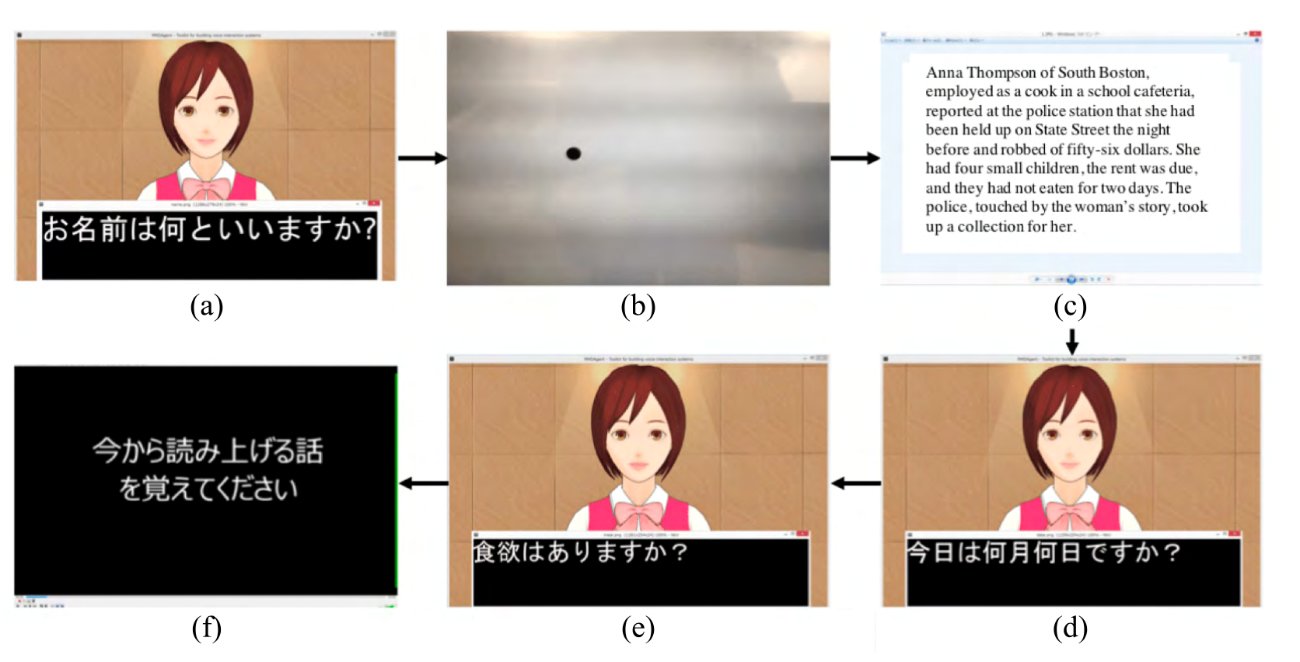Computer taught to determine dementia with an accuracy of 93%

Fear of insanity is one of the most powerful phobias of the Man of Reason. Two hundred years ago, Alexander Pushkin wrote about his famous “God forbid me to go crazy.” Now, in the progressive twenty-first century, little has changed, and we are still afraid of acquired mental disorders. For example, in Russia, dementia scares people more than cancer and stroke: 45% of respondents called it the most terrible disease of old age (data from a survey on the Health Mail.ru Health portal).
Fortunately, medicine today is struggling with dementia much more successfully than in the Pushkin era. With early diagnosis, it is possible to prevent personality decay and preserve cognitive abilities. And recently, the University of Osaka developed a program for the early diagnosis of dementia based on artificial intelligence. The project used machine learning algorithms and data obtained in the process of working with sick and healthy people; diagnostic accuracy was 93%.
What is dementia and how it is recognized
Let's start with the definition. Dementia - acquired dementia, a persistent decline in cognitive activity with the loss of knowledge and practical skills and the difficulty or impossibility of acquiring new ones. Occurs as a result of brain damage, most often in old age. Dementia is accompanied by Alzheimer's disease (it accounts for up to 60% of cases), normotensive hydrocephalus, intracranial tumors and abscesses.
Recognizing dementia “by eye” is not easy: even close people may not notice for years that something is wrong with a person. And when they discover that their relative forgets his name or gets lost on the way to the store, the brain changes are already going too far.
Such “blindness” is mainly due to the fact that dementia in our society is stigmatized and people know little about it. Plays a role and feature of the disorder: changes occur gradually.
However, doctors can recognize dementia in its early stages. To do this, psychological tests are performed with the patient (one of the most well-known is the Wechsler test), and to confirm the diagnosis, analyzes of the cerebrospinal fluid are taken and an MRI is performed.
“The Wechsler test (or the Wechsler scale) is one of the most famous tests for measuring the level of intellectual development. Designed by David Wexler in 1939. The test is based on D. Wechsler’s hierarchical model of intelligence and diagnoses general intelligence and its components - verbal and non-verbal intellects. ” Wikipedia
The existing system is cumbersome and not very convenient, because the patient needs to meet with a neurologist and take time to pass the tests. If all elderly people are tested annually for symptoms of dementia, the burden on doctors will increase several times.

WHO predicts a triple increase in cases of dementia by 2050
AI to help
A solution to the problem was proposed at the University of Osaka: in collaboration with the Institute of Science and Technology, Nara developed a program here that conducts interviews with the person and analyzes his speech and facial expressions. The program is based on artificial intelligence; He studied on interviews with healthy people and those with a confirmed diagnosis of dementia. The program classifies people in the category of "with symptoms of dementia" or "without symptoms of dementia" with an accuracy of 93%. This corresponds to the most effective of the "analog" techniques.
How it works
Passing a computer test for dementia, the elderly communicate with the avatar of the program - an animated girl. She asks questions that are duplicated by subtitles, and "listens" for the answers. After that, the program analyzes the speech and facial expressions of the test participant according to several parameters and displays the result.
As explained by scientists from Nara and Osaka in the publicationdescribing their work, they created an avatar, “sharpened” under the elderly interlocutors: the drawn girl has a slow pace of speech, and after the phrase she makes long pauses. Words are duplicated by large subtitles. When the test participant responded, the system recognizes the utterance, after which the avatar nods his head. The developers borrowed this technique from the animation program popular in Japan - MikuMikuDance: according to users, this makes the character more alive.

The developed test includes several dialogues and scenarios: a) the patient talks about himself; b) its ability to concentrate the eye is tested; c) reading; f) storytelling - the patient is asked to recall a story; (e) Random questions (for example, “How are you hungry?”).
In the test, six blocks that are built on different techniques. The first one is introductory (simple questions “What is your name?” And “How old are you?”). It introduces the user to the system and gives time to get used to the management. Next are the blocks based on two authoritative methods for assessing cognitive abilities: the Wechsler test and the brief mental status assessment scale (MMSE). Even in the test, there is a block of random questions and answers (“What year is it?”, “Are you sleeping well?”, “Who is the prime minister of Japan?”), In responses to which the program analyzes not speech, but speech parameters.
In their work, scientists relied on studies of the speech of people with dementia: they have difficulty understanding phrases, pick up words for a long time, and their active vocabulary is reduced. But in order to analyze speech on all selected parameters, the program took long weeks of machine learning.
Tools and Methodology
29 participants selected to collect materials: 14 - patients of Osaka University Hospital with a confirmed diagnosis of dementia; 15 - the elderly without this diagnosis. Each of them listened to the test questions and answered them.
After that, the developers separated the audio files from the video and manually transcribed the data using the Audacity application, breaking the speech into separate statements. Then the materials were analyzed by several factors.
1) Features of speech: power of voice, speed of articulation and hoarseness. Parameters were estimated based on the spectrogram. Also analyzed the gap between the questions of the avatar and the answers of the respondent.
2) Features of the language. With the help of the program Mecab analyzed the number of significant words and "sounds of uncertainty" - "mmmm", "ehhh". The frequency of using the same words and their relationship with the “sounds of uncertainty” gives a rough estimate of the vocabulary.
3) Image. The developers have identified 31 models of joyful faces and 30 neutral ones from videos depicting female models. In each of the faces, 68 traits were analyzed (the height of the eyebrows, the corners of the lips, the width of the eyes, and others). Based on these data, the AI learned to determine whether there is a smile on the face.
During the interview with the respondent, the program determined for each frame whether the respondent smiles or not; The statistics collected was called the "smile index." People with Alzheimer's disease tend to smile more often, so this index will be too high for them. And with other mental disorders associated with dementia, emotionality, on the contrary, decreases.
The direction of sight was also monitored: studies show that some patients with dementia cease to maintain eye contact with the interlocutor.
To process the results, the Support Vector Machines algorithm (SVM, or support vector machine) with a linear core and a logical regression was used. This is a binary classifier that effectively solves the task: to assign the respondent to the group “with symptoms of dementia” or “without symptoms of dementia”.
Prospects
The developers plan to adapt the program for other languages and other national types of persons (she studied in Japanese). It is also planned to improve the modules. First, take a new data set for the analysis of facial expressions, based on the faces not of young models, but of elderly people. This will improve the accuracy of expression recognition. Secondly, expand the control group in order to get more data from people with various types of mental disorders. It is planned that the program will learn not only to confirm the presence of symptoms of dementia, but also to determine its type by external signs: this will be important when a doctor makes a diagnosis.
PS In November, Smile-Expo will hold two conferences devoted to artificial intelligence: in Kiev (November 14) and in Moscow (November 22).
In MoscowConference speakers will talk about artificial intelligence, Big Data, machine learning, chat bots, and information security; will compare artificial intelligence and Robotic Process Automation (simulate user actions using programs). A discussion panel on the topic “Artificial Intelligence and the Internet of Things: Expectation and Reality” will be held at the conference.
In Kiev, the main task of the conference will be the structuring of knowledge about automating business processes using artificial intelligence. The focus of attention will be the introduction of AI in business processes: profitable areas of implementation, the calculation of efficiency, project management.
